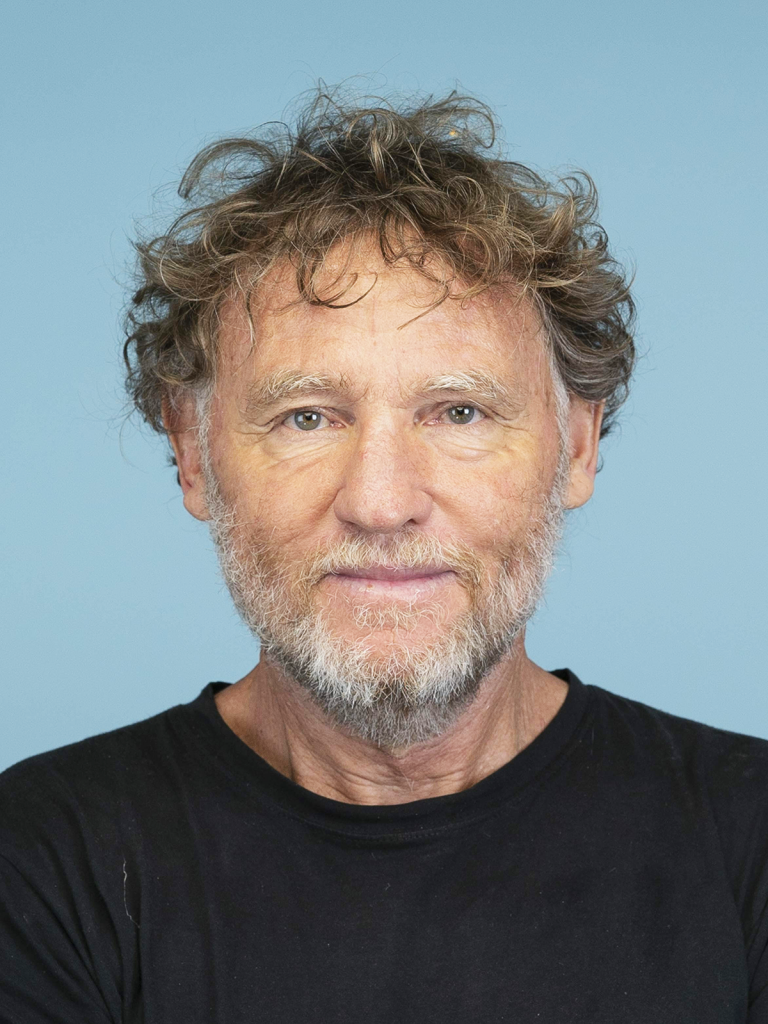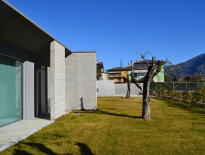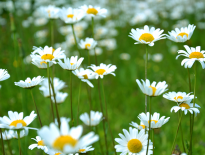LF20 Online Speaker Q+A: David Trubridge
Over the next few weeks, we will run a Q+A series to showcase some of the incredible change-makers who are speaking at Living Future 2020 Online. This week, we are featuring David Trubridge, Artist, Designer of Lighting and owner of David Trubridge Ltd.
Natalie Quek: What does sustainability look like to you?
David Trubridge: Taken literally, being sustainable means being able to go on doing what you are doing forever. So that word cannot be used to describe any business today, including mine (which is why we make no such claims). Most companies use the word to champion one good aspect of their business of which they are proud (applause), while hiding all their other bad aspects (shame). No business today can function without oil (among other bad things), and oil is totally unsustainable, so why not just admit it and say we are not sustainable but we are working towards it as best we can?
Living in a bamboo hut and growing one’s own food could be truly sustainable, but such a life is beyond just about every Westerner, so we have to find ways to reduce our impact from within our system. Focusing on the impossible ideal of sustainability only puts people off, or makes them cheat. So I think we should just concentrate on continually reducing all the bad aspects of our operations. Then we can be proud of each step along the way and brag about them with honesty.

NQ: What initially drew you to a career in sustainability?
DT: I was initially drawn to a career in the craft of woodworking. Sustainability has never been an end in itself for me. But the essence of craft is ‘care’; there are ways to make cheap crap much more profitably, but craftspeople can’t do that because we care. We care about what we make and how we make it, and how the owner will use it. We never take cheap shortcuts or waste material for a quicker job. I would spend an inordinate amount of time trying to get a piece of furniture out of four planks, rather than do it quickly with five and waste more. That is the way we are. That craft paradigm of care was there long before ’sustainability’ became an issue, but it guided us unerringly in that direction. In the 70s I renovated an old stone house in England and we went to the scrap merchants to buy second hand timber and roof slates, almost as if by instinct.
NQ: What does this year’s theme, Sustaining Hope within Crisis, mean to you? How does this translate to your personal or professional life?
DT: How do we sustain hope today? The virus [COVID-19] crisis is pretty bad in the immediate future, but in the longer term the climate crisis could be far worse, both in our environmental devastation and our political ruptures.
If we look at the bigger picture, at the unconscionable power of those immorally fighting to retain the status quo, our efforts for change in time look doomed. So to retain hope we have to focus on what we can achieve at the grassroots level and do everything we can to force that change up the rungs of the ladder of power. Personally, I would love to go and live out my days in a cabin by the sea in the best possible way I can. But I have responsibilities, both to those that work for me and to all those who do not have a voice or any hope. So I have to travel, which is terrible for the environment, but it enables me to do everything I can to help force through this massive change that is so needed.
NQ: What gives you hope?
DT: It is seeing young people starting to get much more involved than they have been in recent generations. They need to continually hold us older generations accountable and to keep the pressure on us to force through that massive change.
NQ: Can you give us a taste of what you’ll be talking about in your session at Living Future?
DT: I will be putting design into a broader social context. The practice of design cannot exist in isolation or even in limited connection. As designers we have to be aware, not only of all the implications of what we do, but also of the unconscious programming we have received from our culture, which is our world view. Why are we so destructive towards all other life on Earth? Where did that come from?
We are now realising that everything is connected and interdependent. That includes past generations of peoples in all parts of the globe whose knowledge and wisdom we tend to neglect in our dogmatic belief in progress. Wade Davis says that “saving the planet means listening to indigenous peoples”.
What is a “world view” and how does that drive our process of design? I want to show that the Western world view is one set of values, but not the only one. That in fact it is not even a good one any more, because it is predicated on the marginalisation of so many people and on the destructive exploitation of nature. Western design is an egotistical act of control, a deity-like external imposition — that is an expression of its world view.
I will talk about the Polynesians, about their amazing and unparalleled achievements as navigators. I will show that there are parts of their world view which offer so much more hope for us in a better balanced relationship with the Earth and with each other. How can we learn from this to improve our design practice?
How can design become facilitation instead of imposition—a partnership with nature and community? How can it work for real need, rather than be driven by its own need to sell?
NQ: What’s a must-read/watch/listen for anyone involved with the sustainability community?
DT: My must-read suggestion is “The Patterning Instinct” by Jeremy Lent. He puts so many of the problems of today in the greater context of all that has gone before in many different cultures.
NQ: Why is it so important to move forward with Living Future 2020 Online?
DT: To plan for the future in this time of massive upheaval and opportunity; hope is needed even more than ever.
The virus [COVID-19] crisis has changed everything. It has thrown our politics into turmoil; neo-liberal governments have been forced to take steps that would have been impossible to imagine only months ago. All their ideological weaknesses have been brutally exposed in a time of great need, and it is the caring, people-minded governments and leaders (like ours in New Zealand) who are coming out of this best. So this devastating pandemic has opened up serious opportunities: while in lockdown we can reflect on and discuss what really matters and how we want to rebuild the world ‘afterwards’.
Having gone through deprivation and—in too many cases—real suffering, having seen nature recover so quickly in this breathing space, why should we go back to the madness we had before? I feel sure that most people here will have discussed these issues and that we are probably pretty much in agreement. But what needs to happen now is the urgent creation of plans for rebuilding, the way we want it. Because if we don’t, at best we will revert to what we had before, an accelerating mad descent into climate devastation. And at worst, the profiteers will be rushing to impose their own ’shock doctrine’ changes, just like the way in which the Keystone Pipeline is being forced through right now.
Can’t wait to hear more from David? Attend his virtual talk, I Am the Land, at Living Future 20 Online, May 7-8, 2020.
Cover Image: Coral Pendant, courtesy of David Trubridge.
Interviews have been edited for clarity and brevity.


